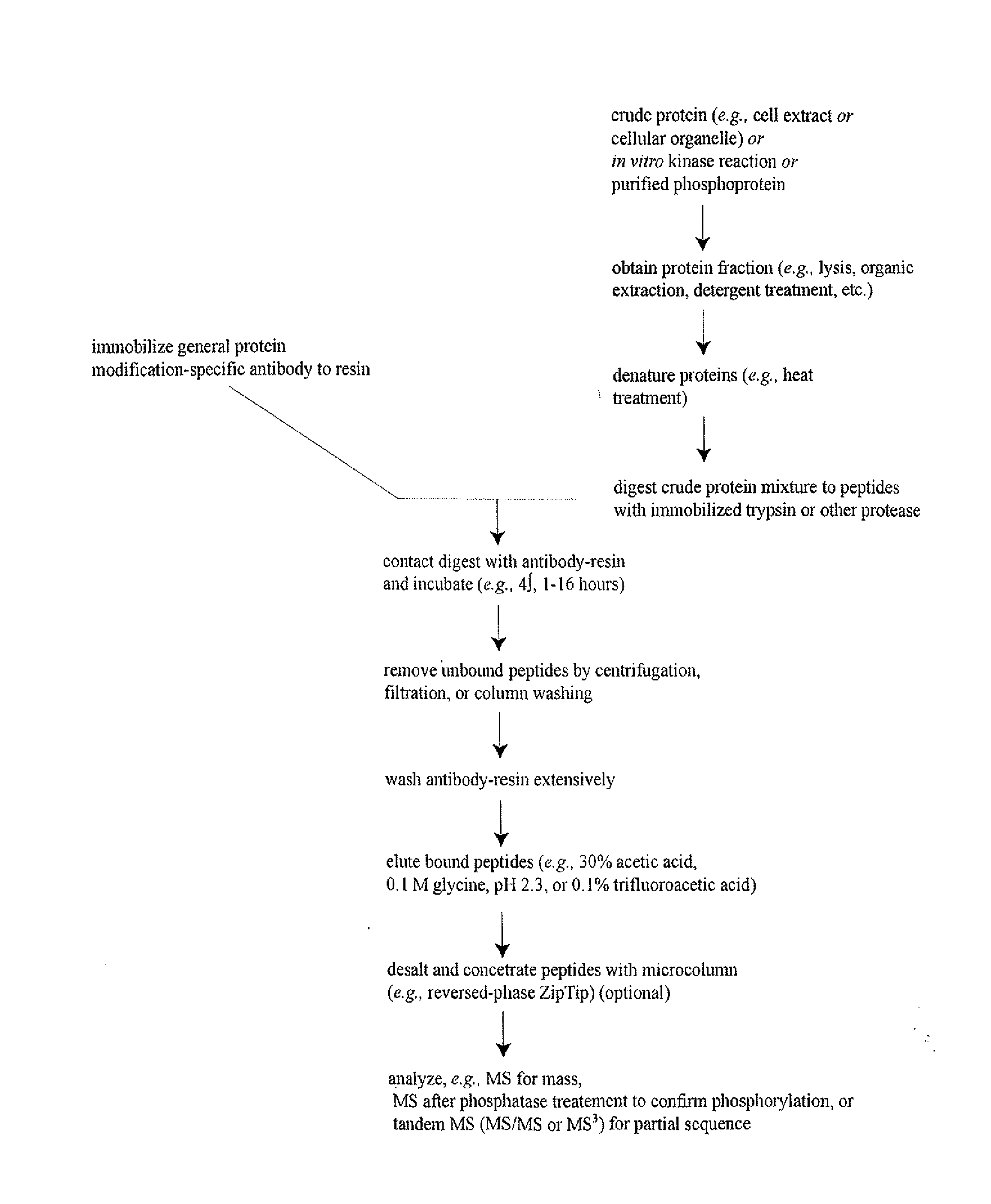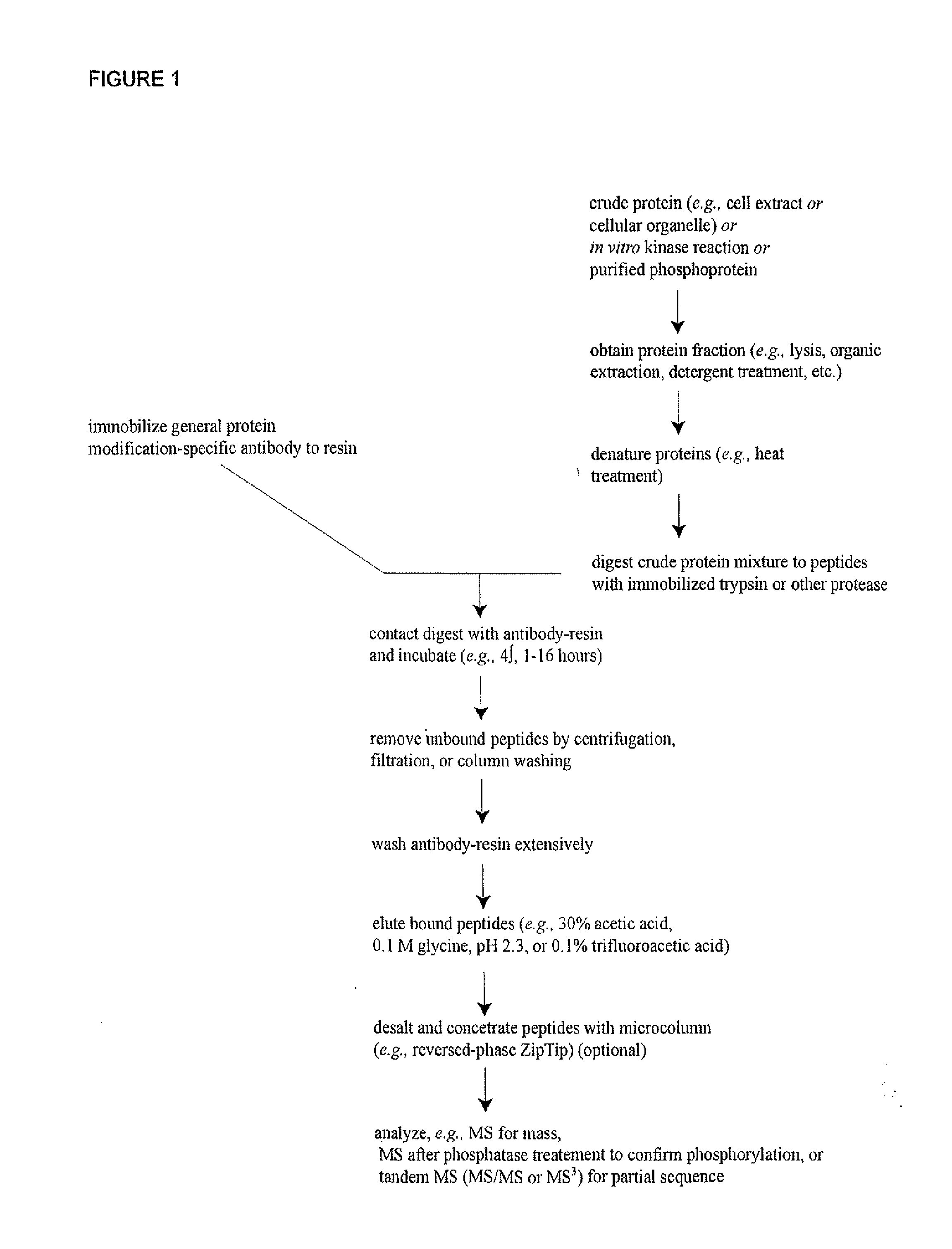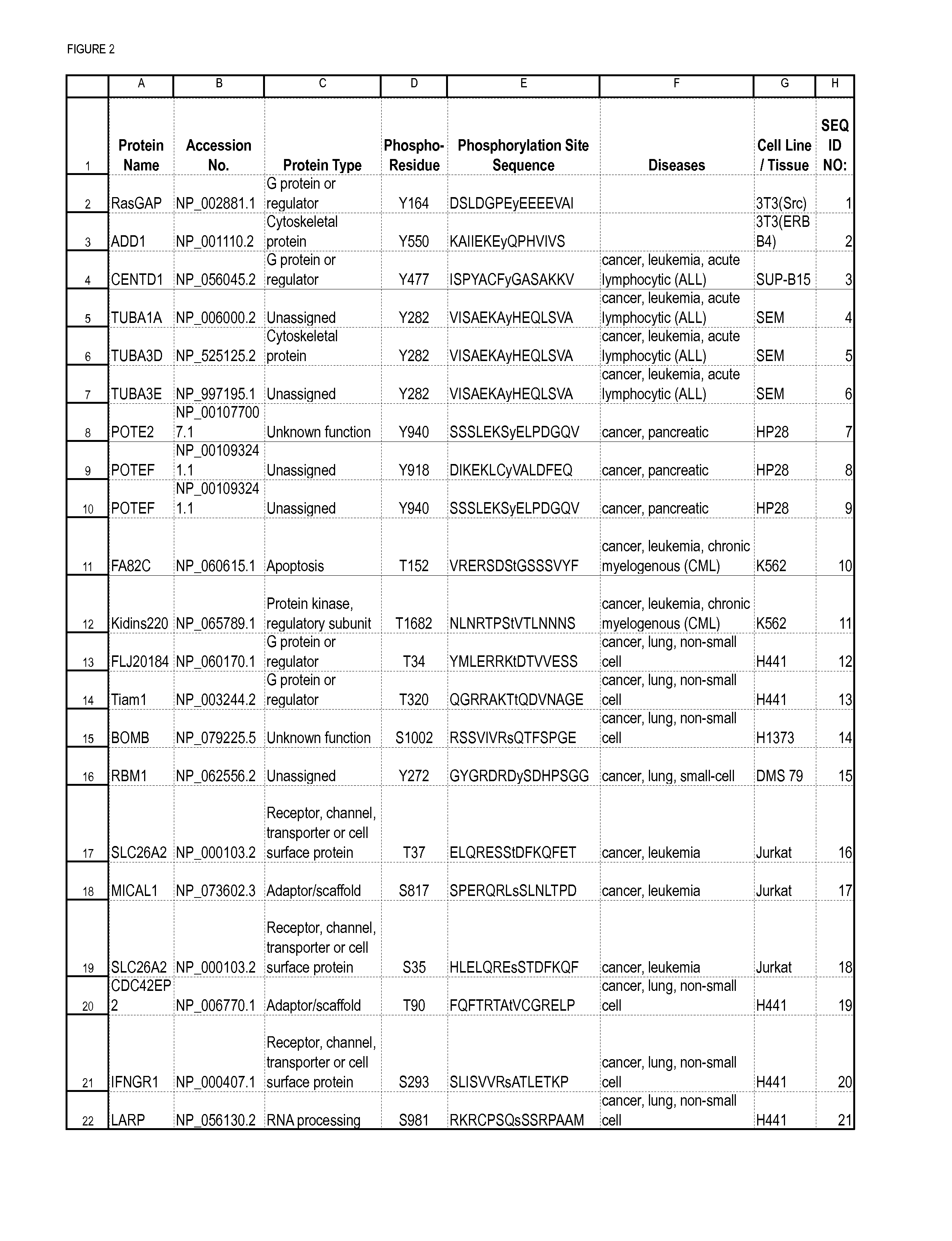Serine, Threonine, and Tyrosine Phosphorylation Sites
- Summary
- Abstract
- Description
- Claims
- Application Information
AI Technical Summary
Benefits of technology
Problems solved by technology
Method used
Image
Examples
example 1
Isolation of Phospho-Tyrosine, Phospho-Serine and Phospho-Threonine Containing Peptides from Extracts of Carcinoma and Leukemia Cell Lines and Tissues and Identification of Novel Phosphorylation Sites
[0246]In order to discover novel tyrosine, serine and / or threonine phosphorylation sites in carcinoma, IAP isolation techniques were used to identify phosphotyrosine, serine and / or threonine-containing peptides in cell extracts from human carcinoma cell lines and patient cell lines identified in Column G of Table 1 including 3T3(ERBB4), 3T3(Src), Adult mouse brain, B29 AML, BxPC-3, C2C12-D, DMS 153, DMS 79, Detroit562, ENT01, ENT16, ENT24, ENT8, Embryo mouse brain, H1373, H1703, H3255, H441, HCC1937, HCC827, HCT 116, HP28, HT29, Hs746T, Jurkat, K562, KATO III, Kyse270, Kyse450, Kyse520, L540, LCLC-103H, MKN-45, MV4-11, Molm 14, N06BJ635(25)-R, N06CS55, N06c78, N06cs84, NUGC-3, NUGC-4, RJ-136521LT, SEM, SNU-C2B, SUP-B15, XY3-81-T, lung (mouse), mouse heart, mouse liver and xy3-224T. Tryp...
example 2
Production of Phosphorylation Site-Specific Polyclonal Antibodies
[0263]Polyclonal antibodies that specifically bind a novel phosphorylation site of the invention (Table 1 / FIG. 2) only when the tyrosine, serine and / or threonine residue is phosphorylated (and does not bind to the same sequence when the tyrosine, serine and / or threonine is not phosphorylated), and vice versa, are produced according to standard methods by first constructing a synthetic peptide antigen comprising the phosphorylation site and then immunizing an animal to raise antibodies against the antigen, as further described below. Production of exemplary polyclonal antibodies is provided below.
A. RasGAP (Tyrosine 164).
[0264]A 15 amino acid phospho-peptide antigen, DSLDGPEy*EEEEVAI (SEQ NO:1; y*=phosphotyrosine), which comprises the phosphorylation site derived from human RasGAP (an adaptor / scaffold protein, Tyr 164 being the phosphorylatable residue), plus cysteine on the C-terminal for coupling, is constructed accor...
example 3
Production of Phosphorylation Site-Specific Monoclonal Antibodies
[0271]Monoclonal antibodies that specifically bind a novel phosphorylation site of the invention (Table 1) only when the tyrosine, serine and / or threonine residue is phosphorylated (and does not bind to the same sequence when the tyrosine, serine and / or threonine is not phosphorylated) are produced according to standard methods by first constructing a synthetic peptide antigen comprising the phosphorylation site and then immunizing an animal to raise antibodies against the antigen, and harvesting spleen cells from such animals to produce fusion hybridomas, as further described below. Production of exemplary monoclonal antibodies is provided below.
A. TUBA1A (Tyrosine 282).
[0272]A 15 amino acid phospho-peptide antigen, VISAEKAy*KEQLSVA (SEQ ID NO: 4; y*=phosphotyrosine), which comprises the phosphorylation site derived from human TUBA1A (Tyr 282 being the phosphorylatable residue), plus cysteine on the C-terminal for cou...
PUM
| Property | Measurement | Unit |
|---|---|---|
| Volume | aaaaa | aaaaa |
| Volume | aaaaa | aaaaa |
| Volume | aaaaa | aaaaa |
Abstract
Description
Claims
Application Information
 Login to View More
Login to View More - R&D
- Intellectual Property
- Life Sciences
- Materials
- Tech Scout
- Unparalleled Data Quality
- Higher Quality Content
- 60% Fewer Hallucinations
Browse by: Latest US Patents, China's latest patents, Technical Efficacy Thesaurus, Application Domain, Technology Topic, Popular Technical Reports.
© 2025 PatSnap. All rights reserved.Legal|Privacy policy|Modern Slavery Act Transparency Statement|Sitemap|About US| Contact US: help@patsnap.com



